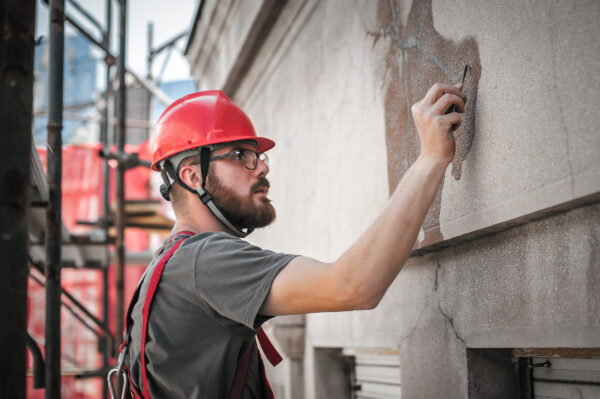 Over the last few years, there has been an evolution in personal protective equipment in the construction industry as every employer continues to strive for a zero-accident goal. The two biggest enhancements we’ve seen in every day PPE have been related to hard hats and gloves.
Over the last few years, there has been an evolution in personal protective equipment in the construction industry as every employer continues to strive for a zero-accident goal. The two biggest enhancements we’ve seen in every day PPE have been related to hard hats and gloves.
Hard hats for decades have remained relatively unchanged in construction. Workers have worn a simple protective shell with a mountable suspension on their heads and this has remained a gate entry requirement for any construction worker accessing an active construction site. In more recent years, we have seen a shift in the design of hard hats and the level of protection they provide.
The classic hard hat we’ve all grown accustomed to are considered Type I and are based on the American National Standards Institute (ANSI) standard for industrial heat protection. ANSI, develops best practice and consensus standards for all sorts of consumer products, construction equipment, and personal protective equipment. The standard specific to head protection provides all stakeholders (manufacturers, suppliers, and users) with the most updated performance and testing requirements for hard hats, considering improvements in technology, testing methods, materials, worker needs, and the use and application of products.
Testing conducted by ANSI has shown the superior protective properties a Type II hard hat (more commonly known as helmets) provide when compared with the traditional Type I hard hat. Type I hard hats are only designed to protect workers from objects and blows that come from above and strike the top of a helmet. Type II helmets are designed to offer protection from lateral blows and objects. This includes from the front, back, and side as well as from the top. Type II hard hats are also tested for off-center penetration resistance and utilize a chin strap to ensure the helmet stays on the worker’s head.
There are two things holding back the industry from full implementation of Type II.
- Optics: A Type II helmet looks different as it closely resembles a mountain climbing style helmet; and more noticeably, it has a chinstrap. For a middle-aged worker that has worn a traditional hard hat for the entirety of their career and is now being presented with a Type II helmet that looks and feels different, it is expected to be met with some level of resistance. But in my experience, once a worker gets over how it looks, they realize the helmets are more comfortable and provide equal or better ventilation than Type I hard hats.
- Cost of the Type II helmets compared to Type I hard hats: On average, the difference is about $80. This difference in cost has been decreasing thanks to healthy competition in the marketplace as just about every PPE manufacturer now offers a Type II helmet in their product line. However, for an employer of 100+ employees, this can be a large cost they did not anticipate. But now let’s compare the cost of a $120 helmet to other necessary PPE that is provided to your workers, such a fall protection equipment or respiratory protection. All of a sudden, $120 to protect the single most important organ in a worker’s body is well worth the investment.
Many general contractors have made the switch for their employees to Type II helmets and the feedback has been very positive. We are also now seeing many General Contractors, developers, and owners requiring Type II helmets to be worn by all contractors on their property as a contractual obligation. The industry is evolving just as people’s opinion has around Type II helmets. Everyone is buying in to the Type II helmet movement and if you are not on board yet, it’s time to jump on. Not only is it the best way to protect your worker’s heads, but it also shows a commitment to safety to your insurance carrier, your customers, and most importantly, your workers by providing them with the best PPE on the market.
Contact a Marsh McLennan Agency (MMA) advisor with any questions.




